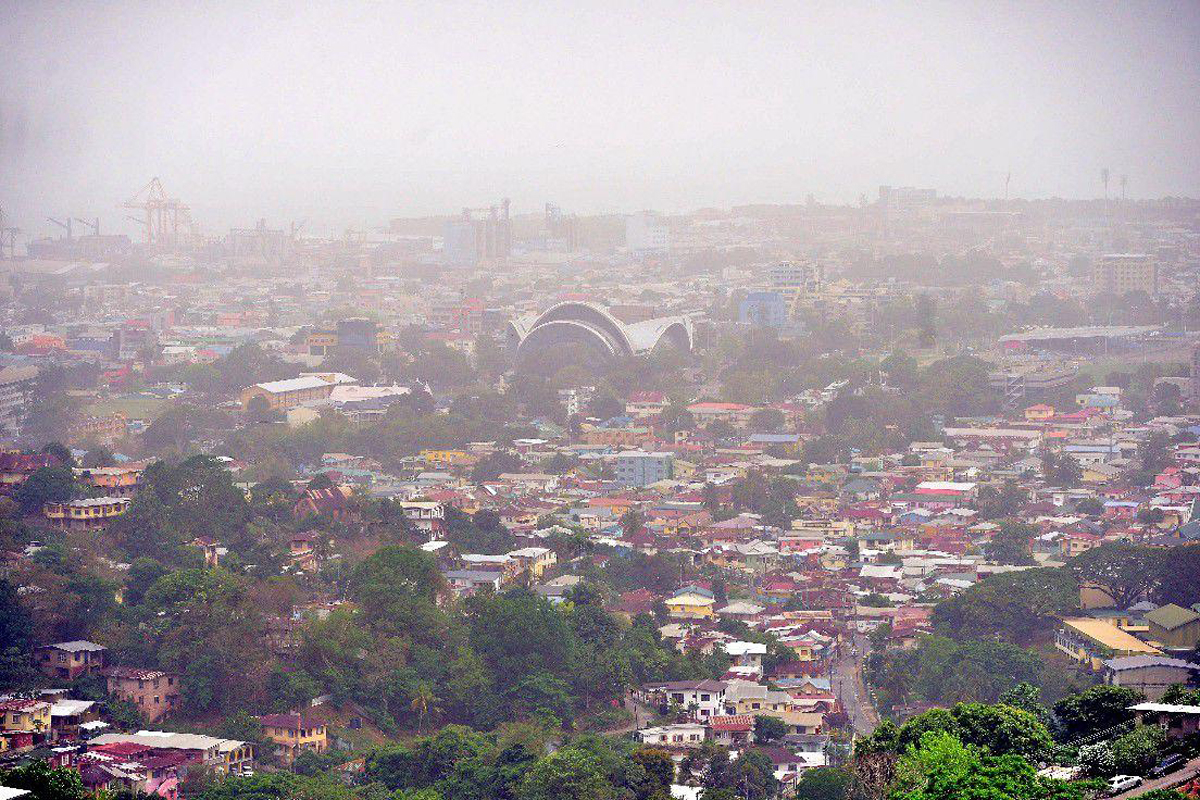(Trinidad Express) THE Saharan dust plume that crossed the Atlantic Ocean from west Africa is smothering islands in the Caribbean, including Trinidad and Tobago.
Following the Trinidad and Tobago Meteorological Service’s updates over the weekend, in which severe dust haze was recorded on Sunday, the Environmental Management Authority issued precautions to citizens yesterday.
The authority, which maps the country’s Air Quality Index, noted in an advisory that unhealthy levels were recorded.
“The Air Quality Index has registered moderate in Trinidad and unhealthy in Tobago at 11 a.m. (yesterday) at the monitoring stations of the Environmental Management Authority (EMA) in Point Lisas and Signal Hill respectively,” it said.
The Air Quality Index is a number used to quantify the level of pollution in the air. As this number increases, “An increasingly large percentage of the population is likely to experience increasingly severe health effects,” it added.
In Trinidad, the AQI read at 91 while in Tobago, the number reached 154. As a result, warnings were issued to vulnerable groups such as those with respiratory illnesses and heart disease, who may potentially suffer from premature death.
“Who should be worried? Increased aggravation of respiratory symptoms in sensitive groups, including older adults, children and people with respiratory ailments and allergies; increased aggravation of heart and lung disease and premature mortality in people with heart or lung disease; increased respiratory effects in the general population. People with heart or lung disease, older adults, children and people with respiratory ailments or allergies should avoid prolonged or heavy exertion. Everyone else should reduce prolonged heavy exertion,” said the statement.
As dust levels formed thick clouds over much of Trinidad yesterday, many took to social media to describe the event. “It’s bad, I live next to the sea and when I came out this morning, my car was like mud coat it. It is the worst I’ve ever seen,” wrote one commenter. “Skies looking full of heavy rainfall and clouds but you know it’s not clouds, sun shining through,” wrote another.
The presence of Saharan dust in Trinidad and Tobago is a yearly occurrence which typically peaks during the June to August period. According to TTMS, the dust transportation begins over the Saharan Desert, over which a dry, dusty layer of air rises into the atmosphere. This layer known as the Saharan Air Layer, is composed of Particulate Matter (PM), which is transported by Easterly winds to the West. Much of it is deposited in the Southern Caribbean.
Protective effect
An article published in the Lancet medical journal in 2019 noted that Saharan dust brings both benefits and complications. Noted for its contributions in soil fertility in the region and other areas, the article stated that its presence in large volumes can affect population health.
“Sahara dust has been treasured as a natural feeding source of minerals to the western Atlantic coast and nutrients to the rainforests in South America. Nature lovers admire its vibrant effect on colourful sunsets, and environmental physicists appreciate its protective effect from solar radiation and its marine bio-geochemical cycling. Nevertheless, its intrusions have been a cause of global concern in recent times, owing to air pollution and its associated health risks,” it said.
The dust, which is expected to persist until Friday of this week, has not yet been addressed by the Ministry of Health. However, updates in previous years have asked that persons who are considered vulnerable stay indoors where possible and seek medical attention where necessary.
